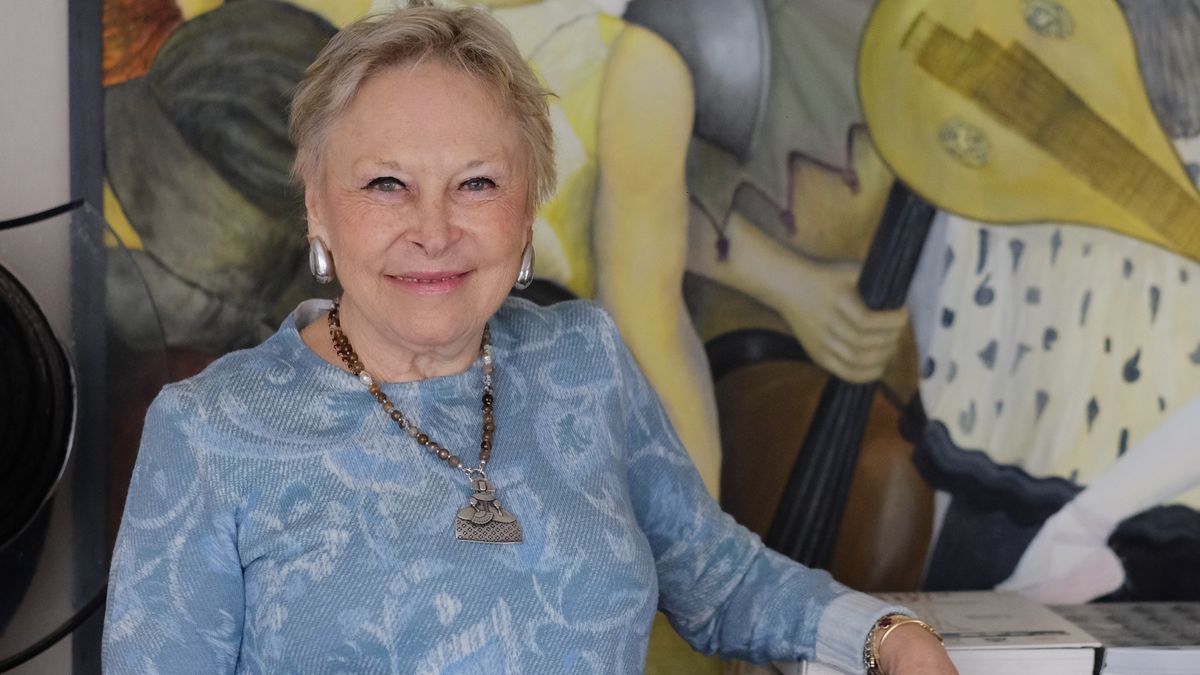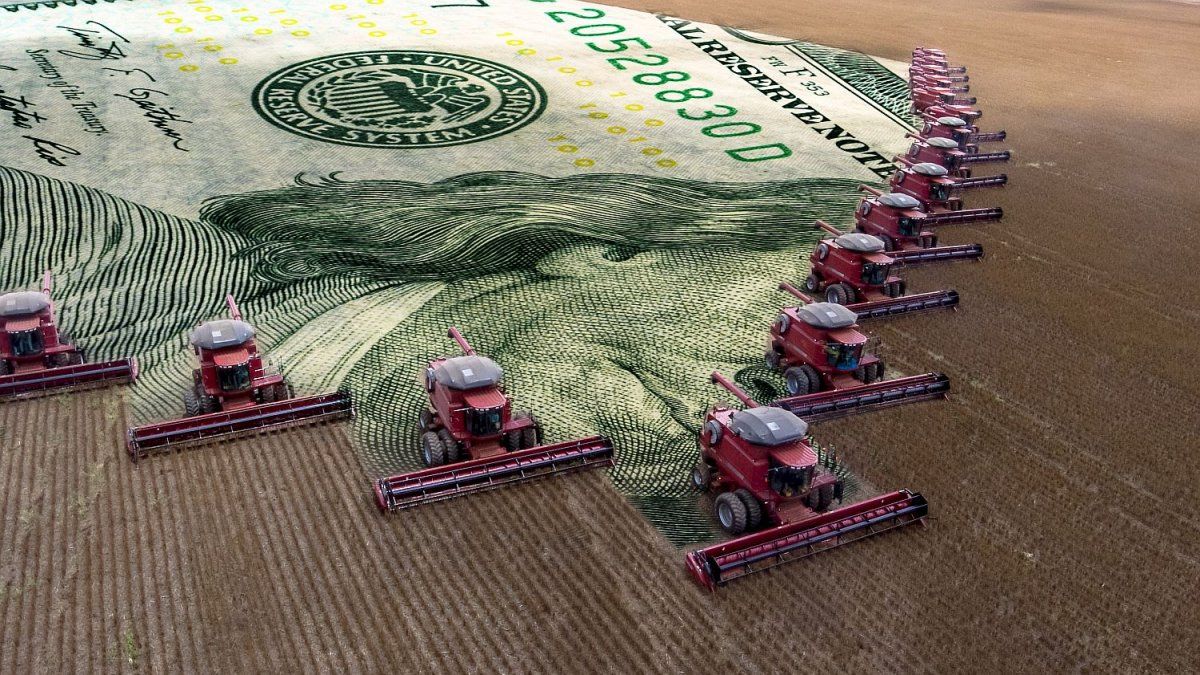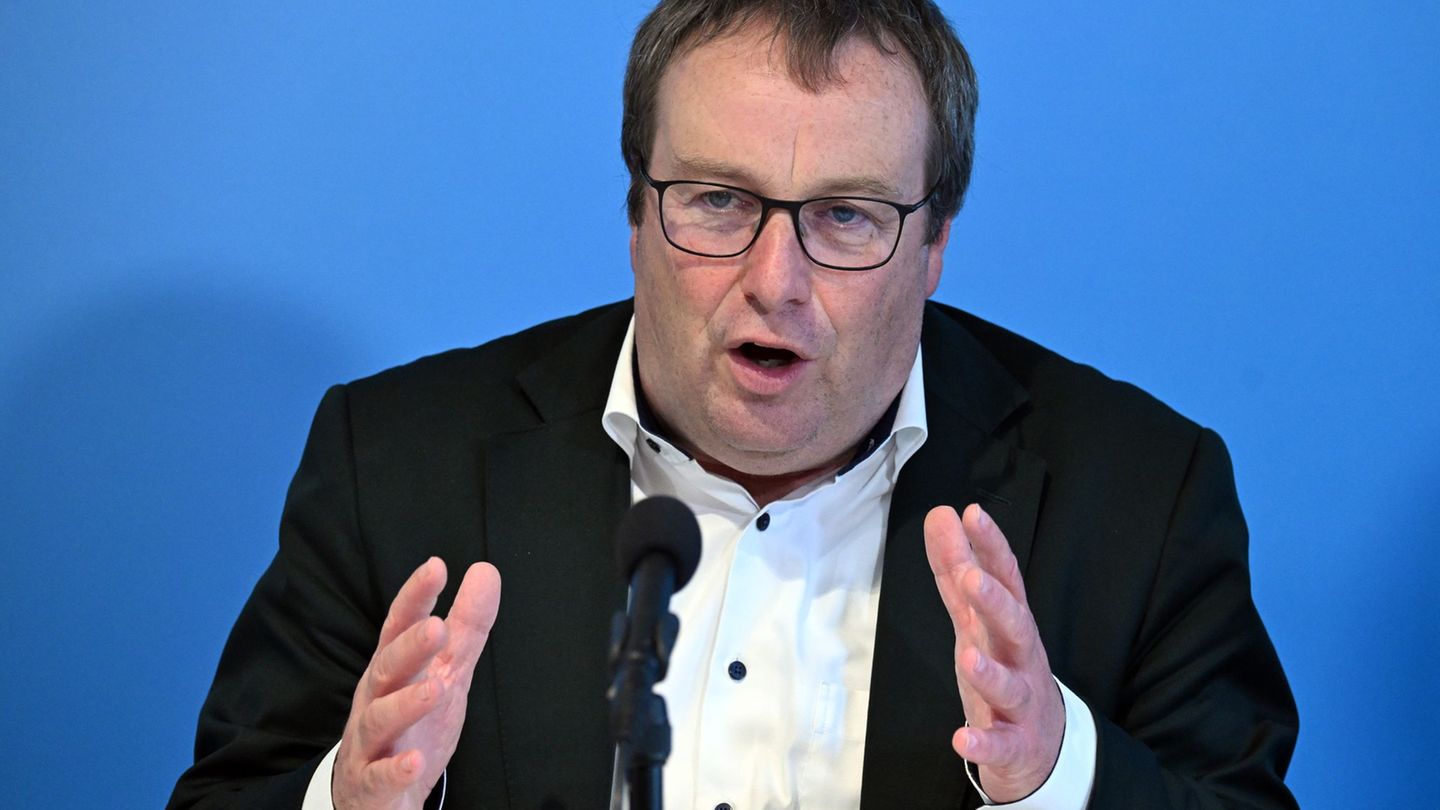His professional debut was not programmed, but a consequence of a discovery for expert eyes, a proposal that changed his life. During the Rwanda massacre, in 1994, Faraone He had observed, in a newspaper, reading the news during his breakfast, a photographic portrait of an African family crossed by unbearable pain. “I transmitted such an intense pain that it led me to paint it”tells this newspaper “To create a painting. I had painted a lot until then but I had never exposed, nor did I intend to do it. But Manuel Zamora, the gallery owner, saw this picture and asked me if I had bought it..
Expression of a race
That first series, entitled “Expression of a race”revealed the footprint he would leave in his career: painting in response to collective suffering. In his book “The emotion of painting”, Faraone describes in this way some of those portraits.
About “Tenderness” He says: “It arises from my need to create an image of universal experience in the midst of extreme circumstances. At the sublime moment of communion between a woman and her son. Language has no borders.” About “Women’s portrait”: “Expresses my desire to see joy in the faces that were furrowed by tears. The smile can be rather a grimace when the pain has been installed in the soul. That is why I put special emphasis on the joy of faces.”
Over time other series of strong symbolic and cultural burden came: “Carnival of Venice”distinguished as revelation of the year by Aerolineas Argentinas, or “The world of opera”where he painted twenty -three lyrical titles (among them “Tosca”, “Madama Butterfly”, “Lucia di Lamermoor”, “The Lady of Pique”, “Ariadna in Naxos”) and collaborated with the Colón Theater on concert roofs.
“My admiration for Puccini’s music was a fundamental factor in my desire to take some of his characters as vehicles to express my feelings,” he writes in “The emotion of painting”. “‘Tosca’ is, for my liking and in all its arias, a sublime compendium of musical beauty. The painting shows the protagonist of the final scene, moments before committing suicide in the midst of desolation. Chaos is the cost of messy passions. Despair invades the spirit that, as a prisoner of a crossroads without exit, is ally of death.”
Faraone You do not hesitate if you have to choose between the abstract and the figurative. “I am going to countercurrent. I was always attracted to figurative painting, I admire some abstract artists, without a doubt, but I am a person who needs to use the figure. I love beauty, color, and I need to express myself through that path. Including the dreamlike, of course, that it is still figurative. I reiterate, I don’t want to disqualify abstraction and some of its great artists, ”he says.
Faraone It also produced portraits, religious inspiration works such as the Crucis exhibited in the UCA, or personal, such as the art critic Rafael Squirruthe first who supported his work, and a vast production of images that are part of private and institutional collections. However, the social continues to beating in each line.
“By nature I am sensitive,” he continues in the dialogue with this newspaper. “It affects me the social, injustices, war, hunger. So when one really lives, all that sensitivity appears in the fabric.”
That sensitivity was not always understood immediately. In a visit to New York, the artist recalls when telling an adécdote, a revealing scene occurred: “We were hosted in a little distant hotel, and we had a combi that brought us closer to the center. The person who handled it was black. When I got off I said: ‘I painted African people’. The gaze that directed me gave me to understand that I had taken it to bad, I looked at me with hate. Catalog of the sample, I took it and said: ‘Lord, I am solidarity with this suffering.’ That meeting confirmed that the painting can open a bridge where words fail.
Faraone Cry
“A cry for peace”, the picture of great proportions that María Faraone will take to the Biennial of Florence.
A cry for peace
Today the artist prepares to participate in the Biennial of Florence with a work of symbolic forcefulness, “A cry for peace”. He describes it to this newspaper with passion: “What transpires this work is the hateful hate through the years in the history of humanity. Man has involved instead of evolving.”
And it continues: “Today we look around and it is a polvorín: Gaza, Ukraine, nuclear threats. The human species is condemned by its appetite of power and revenge. Art and culture, in that sense, are a refuge in which to dump that pain that pain”
On the canvas an upper eye opens, the eye of God, which observes a composition governed by animals that embody political leaders, figures that handle the threads of violence and decide on life and death. On the side, a thoughtful figure represents the United Nations, helpless, almost decorative. Below, mothers and wives torn, a soldier who does not understand what happens, and in the background a row of combatants who march towards war.
“The dead tree to which another soldier cling comes from a real photograph taken in Ukraine”clarify Faraone “While anonymous tombs remember that death does not distinguish sides. A casuarry even appears, the most lethal bird in the world, metaphor for that blind aggressiveness that stalks humanity. It is an Australian bird: in its legs there is a nail that is a razor, capable of destroying anyone. It seemed important to give it a place in the composition.”
The forcefulness of this piece is registered in a trajectory recognized by multiple awards: the Gallery arctitude award (Paris), the first prize in drawing from the plastic, the first prize in painting of the Argentine-Brazil artists encounter, the first prize in painting of the Historical Museum of the Army and Fort of Copacabana, and the Gold Medal of the Brazilian Academy of Art, Culture and History.
His books “The emotion of painting” and “Inks and drawings” They were presented at the Moma Book Fair in New York, and their most recent experiments explore the art-object with mixed techniques that incorporate clothes and industrial materials.
As the curator of his work explains, Julio Sapollnikin these works the artist turns the ordinary into extraordinary, proposes a trip that transforms everyday objects into aesthetic pieces loaded with brightness and texture, and makes the viewer “artist of contemplation.”
During the pandemic, adding sapollnik “María Faraone developed a new series of works that impact the emotion of the contemplator. This time it uses different techniques: the softness of the drawing, the attraction of color and a way of dressing the characters, with great care in the application of different clothes, which allows it to extend the works within the concept of ‘contemporary object'”.
“The object art”, continues the curator, “of the French term Objet Truvé, includes the art made through adaptations and/or modifications of industrial daily elements that usually do not have an aesthetic function, but that, making art, gives them an artistic and poetic exegesis. Starting from the elements linked to the academic tradition: line, color, proportion, perspective, performs a trip that transforms a trip that transforms the daily object into a daily object of art”.
She summarizes it with almost intimate words: “These are different techniques that allow me.
In this merger of tradition and rupture, collective pain and beauty search, the work of María Faraone is sustained. A work that, from Rwanda to Florence, continues to remind us that painting can be a scream, a shelter, an unanswered question and, at the same time, a gesture of tenderness in the face of the ferocity of the world.
Source: Ambito
I am an author and journalist who has worked in the entertainment industry for over a decade. I currently work as a news editor at a major news website, and my focus is on covering the latest trends in entertainment. I also write occasional pieces for other outlets, and have authored two books about the entertainment industry.




